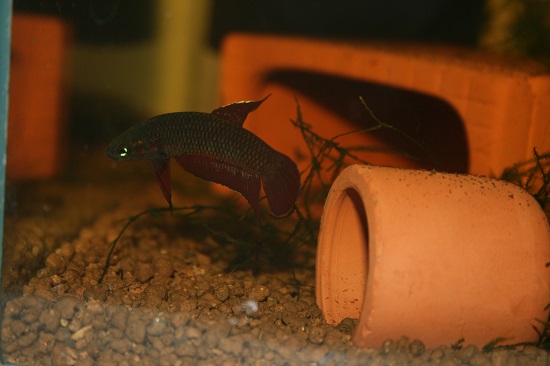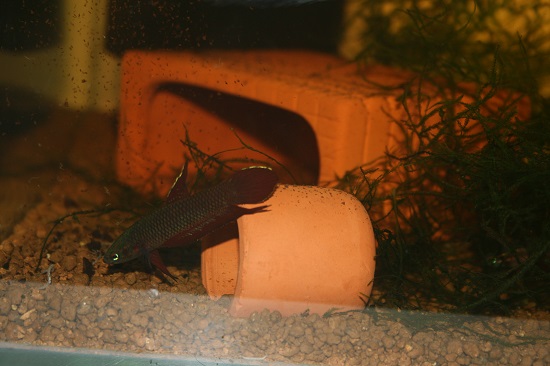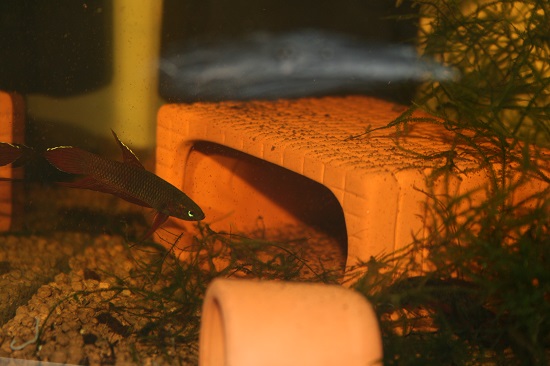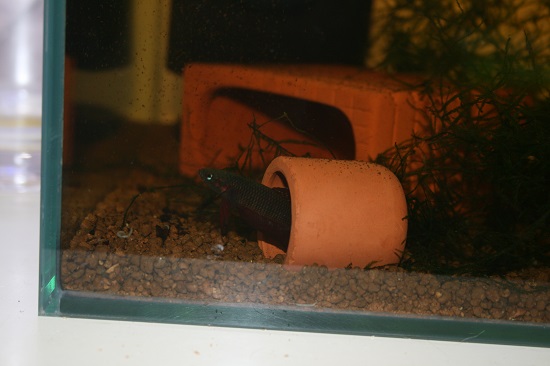|
Here is a species I haven't had in my fish room for a long time: the stunning and rather ferocious Betta coccina. This was actually the first species of wild betta I started off with about three years ago, and it has taken me this long to source myself a group again.
These three come from an Australian wholesaler. I received them a while ago, but they were all suffering from a very nasty ich infection when I got them and so I didn't want to get too far ahead of myself in case they didn't recover. However, after over a week of treatment with Protozin and heat, they seem to be on the mend. After my terrible morning, it was nice to see the dominant male looking much more healthy and feisty than he was when he first arrived here. I believe I have a female and another smaller male. While it would be nice to one day have a wild-caught pair, for now my 'aquarium strain' coccina will have to do. Once they are completely recovered I will be setting them up a proper tank and separating out the smaller male so as to hopefully encourage a spawn.
Nicholas
12/10/2013 10:32:02 am
I'm having a really hard time with a group of betta coccina, I can't properly sex them and I've had a couple deaths. What makes females different than males? do females always have a stripe across their backs? Under different lighting conditions they all seem to have stripes on their backs, but if I shift the light then they look like males.
Ashlea
12/10/2013 02:06:29 pm
Based on my experiences, male coccina have larger, more sharply angled fins with longer/fuller ventrals than the females.
Nicholas
13/10/2013 07:26:33 am
My water parameters are very good, I assumed it was from fighting. I had 6 fish in a 40 gallon breeder. the surviving fish are extremely healthy looking.
Ashlea
13/10/2013 01:05:08 pm
The coccina complex as a whole can be rather aggressive compared to some of the other wild bettas, but I would find it strange for there to be deaths due to fighting, particularly with a group of six fish in 40 gallons.
Nicholas
13/10/2013 02:33:32 pm
they're wild, and I see the most dominant fish all the time, the second most dominant most of the time, and the third hides quite a bit more but comes out for feedings consistently. The third also has vertical stress stripes and is less colorful than the other two. 11/11/2013 06:00:19 pm
It is my great pleasure to visit your website and to enjoy your excellent post on Betta Coccina blog. I like that very much.
Ivo
2/7/2014 03:41:48 am
Hi! I as well enjoy your website very much! great inside information and perfectly written.
Ashlea
2/7/2014 07:52:51 am
Hi Ivo, if they are Betta coccina, I'm fairly certain that they will have black ventral tips. I don't think any other species has black ventral tips, at least not any species that are similar in appearance to coccina (tussyae are white and livida are green). Comments are closed.
|
AuthorLocated in Melbourne, Australia, I currently keep and breed a number of species from the coccina complex. Archives
November 2017
Categories |




 RSS Feed
RSS Feed
